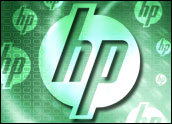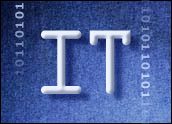
HP’s now officially pending EDS buy for just shy of US$14 billion positions the combined companies to organize and manage the hosted/on-premises mix to maximum efficiency and lowest total cost of ownership. It’s a great goal to shoot for because all they have to do is beat IBM.
With this merger, the IT/business transformation second-source in the global market is alive and well. There’s always this: The better IBM does, the more need there is for an alternative.
HP with EDS has now clearly staked its future on the top prize in IT: next-generation IT operations efficiency, proper outsourcing methods, cloud computing services management, and high-level consulting as the on-ramp. This amounts to business transformation via IT transformation via IT multisourcing.
Change Is Gonna Come
Both business and IT need to change, but with a hugely complex migration process in store over the next decade. The end goal is a symbiotic and ultimately fully aligned means to business agility, innovation and holistic change management. (Disclosure: HP is a sponsor of my BriefingsDirect podcasts.)
However, there’s a missing methodology in this migration process, sort like the “missing link” of how IT and business will evolve from lumbering and reactive gatherers into sharp-stick wielding, proactive hunters and inventors. That missing methodology is a tried and true way to determine — enterprise by enterprise, unit by unit, department by department — what elements of IT to offload to clouds and what to embed deeply into the core business as strategic assets. This is the bread and butter of HP and IBM for quite some time.
Most companies and IT strategists now recognize that some portion of what they now do for themselves in IT they ought to offload onto someone else — or at least provide it as a service via some hybrid underlying support means. The cost efficiencies, utilization rates, flexibility, marketplace-driven productivity aspects of cloud computing are simply too wonderful to ignore. We simply should not have standalone e-mail servers every 60 square yards inside of companies. It’s foolish. Same with a lot of other applications. SOA (service-oriented architecture) can help use and extend those assets better, but we also need to take a look at offloading them all too.
Innovation by Necessity
At the same time that we recognize a milestone shift in how software and services are used and matured inside of businesses, the macro environment is driving the impetus for the same transformation. Perhaps more than ever, businesses need to not only to be efficient and seek to reduce recurring costs but also they need to be able to adapt as quickly as possible — and never stop.
The missing link methodology needs to enable companies to adjust to globalization, raw resources/commodities scarcity, dreadful energy costs, transnational labor use patterns, Internet time, social networks, transaction-driven business models, and massive upheavals in e-commerce, media, transportation, compliance, and the usual vagaries of competing against tough competitors springing up from who-knows-where next.
Companies clearly need to innovate better, and that innovation must use and leverage technology far better than in the past, and at lower total cost over time. Yet IT departments are not designed (if they ever were designed) to innovate at speed or scale. They are designed to carefully support the crystal and china setting upon the legions of racks, and to prevent any bulls from entering the closet — lest the whole thing crash, and no fingers to point at the cure. There is a huge disconnect between what IT does and what businesses need to do. It’s not IT’s fault, it’s just the way it’s all developed over time … but it’s largely a dead end.
Finding the Balance
As a result, total business innovation must seek alternatives to just transforming internal IT capabilities and practices alone. Fortunately they seek these alternatives at just the time when those alternatives are increasingly available and viable. Choice on IT and business services off of the wire is entering a fertile and impressive stage. There will be lots to choose from. Choosing right is a big deal for the next decade.
However, how to move best on this momentous opportunity? This is the question that HP-EDS can answer as the driver to their businesses growth. Only through deep, consultative partnership can huge enterprises undertake internal IT transformation while making the essential decisions about what to keep inside, and what to seek as the best services alternatives. At the same time, they need to build and adjust continually the business processes that are supported by these services from many sources. They must position their abilities with multisource IT with their current and future business requirements and goals.
HP’s services units have been diligent about establishing meta methods that allow for both efficiency improvements and transformation. HP’s software and hardware units have been diligent about business technology optimization (BTO) and high-efficiency/high-availability computing. HP’s acquisitions have given it an arsenal through which to operate data centers at peak efficiency and top operational integrity.
Adding EDS to the mix to tackle the definition of and implementation of the missing methodologies to take IT functionally to a multisource level that actually enables businesses at the strategic level seems a very strong fit indeed.
Dana Gardner is president and principal analyst at Interarbor Solutions, which tracks trends, delivers forecasts and interprets the competitive landscape of enterprise applications and software infrastructure markets for clients. He also produces BriefingsDirect sponsored podcasts.










































Social Media
See all Social Media